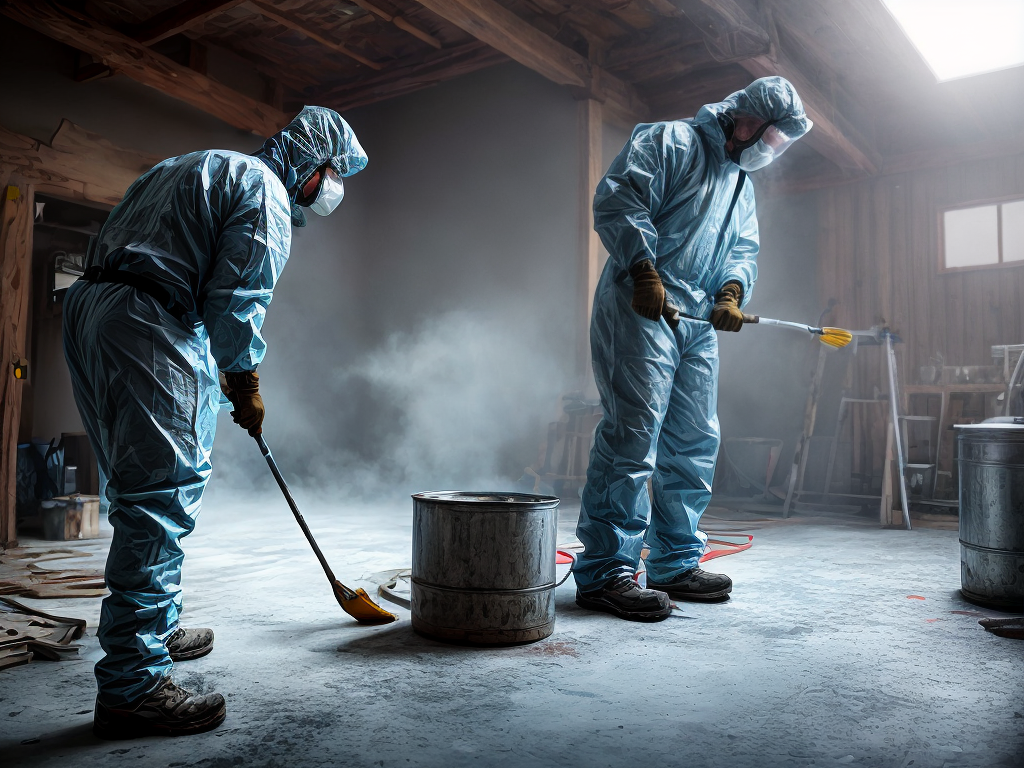
Hi there! I’m a professional painter, and I’ve learned a thing or two about safety in my years on the job. It’s not just about a steady hand and a keen eye—it’s also crucial to understand health safety protocols. In this article, we’ll dive into everything from paint toxicity levels to personal protective gear. So whether you’re a seasoned pro or you’re just starting out, I’ve got you covered. Let’s get started, shall we?
Understanding Paint Toxicity Levels
Often, I’m asked about the toxicity levels in different types of paint, and it’s crucial to understand that not all paints are created equal in this regard. In my Paint Ingredients Analysis, I’ve found that oil-based paints typically yield higher toxicity levels than water-based ones due to the presence of harmful solvents. Through my Toxicity Comparison Studies, it’s evident that prolonged exposure to these toxic elements can lead to health problems. That’s why it’s so important to use safety gear when dealing with these paints. In contrast, water-based paints usually contain fewer toxic ingredients and are safer to handle. However, I always advise reading the ingredients list carefully, as even supposedly safe paints can contain hidden toxins.
Importance of Personal Protective Equipment
So, how do we safeguard ourselves against these toxic elements in paints? The answer lies in the importance of Personal Protective Equipment (PPE). This gear, when used correctly, forms a barrier between you and the harmful substances. But PPE is only as good as its Equipment Maintenance and the Safety Training provided to use it.
| PPE Item | Maintenance Requirement | Training Needed |
|---|---|---|
| Respirator | Regular filter change | Proper fitting and usage |
| Gloves | Regular inspection for tears | Correct removal to avoid contamination |
| Goggles | Regular cleaning | Adjusting for comfortable fit |
I can’t stress enough the importance of good maintenance and proper safety training. They ensure not just the efficiency of your PPE but also your safety.
Ventilation Practices for Safe Painting
Moving on to ventilation practices, I’m advocating for maintaining proper airflow during painting, which plays a pivotal role in keeping you safe from the hazardous fumes.
Here’s a three-step guide for ensuring a healthier painting environment:
- Airflow Optimization: Always ensure that you have good circulation of fresh air. Open windows, doors and use fans to maintain an optimal airflow. This helps disperse toxic fumes, keeping you safe.
- Indoor Humidity Control: High humidity can slow down the drying process and cause paint to drip. Use a dehumidifier to control indoor humidity levels for a perfect, smooth finish.
- Frequent Breaks: Take regular breaks and step outside for fresh air. This reduces your exposure to harmful fumes.
Proper Storage and Disposal of Paint
Diving into the topic of proper storage and disposal of paint, it’s crucial to note that I can’t stress enough the importance of handling these materials responsibly. Paint Conservation Techniques and Eco friendly Disposal Methods are key to safeguarding both our health and the environment.
Here’s a brief table highlighting these practices:
| Paint Conservation Techniques | Eco friendly Disposal Methods |
|---|---|
| 1. Store paint in a cool, dry place | 1. Donate unused paint to local schools or community centers |
| 2. Seal paint cans tightly to prevent drying out | 2. Take leftover paint to a recycling facility |
| 3. Use paint within its shelf-life | 3. Dispose of dried paint in the garbage |
| 4. Mix only what you’ll use | 4. Never pour paint down the drain |
Responding to Paint-Related Emergencies
Handling paint-related emergencies is another important aspect I’m covering, as quick and appropriate responses can significantly mitigate risks and prevent further harm. Primarily, there are three steps I’d recommend:
- Emergency Training: I can’t stress enough the importance of formal training. It provides the necessary skills to handle paint-related emergencies effectively and safely.
- First Aid Application: Knowing basic first aid can be a lifesaver. It’s crucial to understand how to handle minor injuries like cuts or bruises, as well as more serious situations like paint inhalation.
- Immediate Reporting: It’s vital to report any incident immediately. This ensures that professional help can be dispatched promptly if needed.
Being prepared for emergencies isn’t just about safety. It’s about protecting your team, your project, and yourself.


